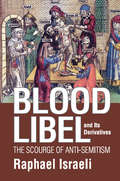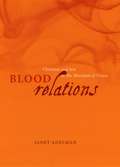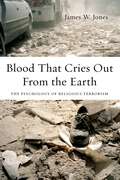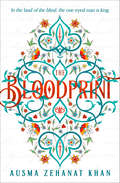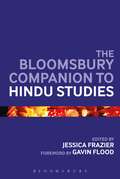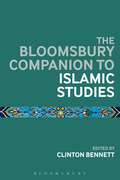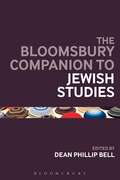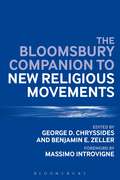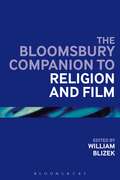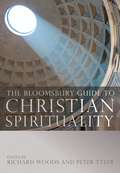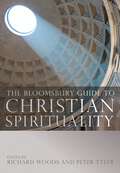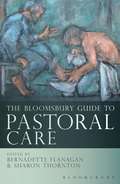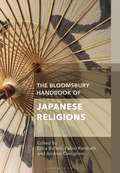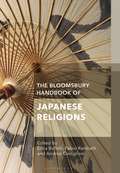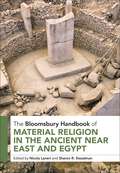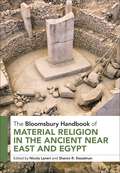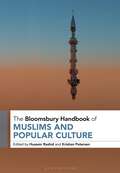- Table View
- List View
Blood Libel and Its Derivatives: The Scourge of Anti-Semitism
by Raphael IsraeliAt the doorstep of the twenty-first century, one would expect that medieval concepts such as blood libel—the accusation that Jews kill children to use their blood in religious ritual—would have been discarded by any civilized human being. Certainly in the Christian world, where the story originated and endured for centuries, modern attitudes have nearly erased these barbaric accusations. But in Arab and Islamic worlds, where enmity towards Israel and Zionism has conditioned beliefs, attitudes, positions, and fantasies, blood libel and similar charges are still part of life.Most people are unaware of the history of blood libel and do not perceive links between it and many of the false accusations currently hurled against the state of Israel. Raphael Israeli argues that individuals and organizations guilty of human rights crimes project crimes onto Israel to avoid awareness of their own guilt. Certainly when countries ruled by dictators set the agenda of the UN Council for human rights, Israel is consistently censured and condemned.Accusations of "apartheid" and charges of discrimination against Muslims are frequently made. Israel is accused of plots against Muslims in order to harm their productive sectors, of using weapons of mass destruction to commit "genocide" against Arabs, of injecting poisonous substances into Palestinian children, of poisoning Arab lands under the guise of "agricultural aid," and of laying siege to peaceful citizens. All of these charges are derivatives of blood libel and have been adopted by Middle East Jihadists in their struggle against Israel. This volume aims to explain the origins of the charge of blood libel and define the ways its derivatives have achieved acceptance in certain parts of the world today.
Blood Relations: Christian and Jew in The Merchant of Venice
by Janet AdelmanIn Blood Relations, Janet Adelman confronts her resistance to The Merchant of Venice as both a critic and a Jew. With her distinctive psychological acumen, she argues that Shakespeare’s play frames the uneasy relationship between Christian and Jew specifically in familial terms in order to recapitulate the vexed familial relationship between Christianity and Judaism. Adelman locates the promise—or threat—of Jewish conversion as a particular site of tension in the play. Drawing on a variety of cultural materials, she demonstrates that, despite the triumph of its Christians, The Merchant of Venice reflects Christian anxiety and guilt about its simultaneous dependence on and disavowal of Judaism. In this startling psycho-theological analysis, both the insistence that Shylock’s daughter Jessica remain racially bound to her father after her conversion and the depiction of Shylock as a bloody-minded monster are understood as antidotes to Christian uneasiness about a Judaism it can neither own nor disown. In taking seriously the religious discourse of The Merchant of Venice, Adelman offers in Blood Relations an indispensable book on the play and on the fascinating question of Jews and Judaism in Renaissance England and beyond.
Blood Relations: Christian and Jew in The Merchant of Venice
by Janet AdelmanIn Blood Relations, Janet Adelman confronts her resistance to The Merchant of Venice as both a critic and a Jew. With her distinctive psychological acumen, she argues that Shakespeare’s play frames the uneasy relationship between Christian and Jew specifically in familial terms in order to recapitulate the vexed familial relationship between Christianity and Judaism. Adelman locates the promise—or threat—of Jewish conversion as a particular site of tension in the play. Drawing on a variety of cultural materials, she demonstrates that, despite the triumph of its Christians, The Merchant of Venice reflects Christian anxiety and guilt about its simultaneous dependence on and disavowal of Judaism. In this startling psycho-theological analysis, both the insistence that Shylock’s daughter Jessica remain racially bound to her father after her conversion and the depiction of Shylock as a bloody-minded monster are understood as antidotes to Christian uneasiness about a Judaism it can neither own nor disown. In taking seriously the religious discourse of The Merchant of Venice, Adelman offers in Blood Relations an indispensable book on the play and on the fascinating question of Jews and Judaism in Renaissance England and beyond.
Blood That Cries Out From the Earth: The Psychology of Religious Terrorism
by James JonesReligious terrorism has become the scourge of the modern world. What causes a person to kill innocent strangers in the name of religion? As both a clinical psychologist and an authority on comparative religion, James W. Jones is uniquely qualified to address this increasingly urgent question. Research on the psychology of violence shows that several factors work to make ordinary people turn "evil." These include feelings of humiliation or shame, a tendency to see the world in black and white, and demonization or dehumanization of other people. Authoritarian religion or "fundamentalism," Jones shows, is a particularly rich source of such ideas and feelings, which he finds throughout the writings of Islamic jihadists, such as the 9/11 conspirators. Jones goes on to apply this model to two very different religious groups that have engaged in violence: Aum Shinrikyo, the Buddhist splinter group behind the sarin gas attacks in the Tokyo subway system, and members of the extreme religious right in the U.S. who have advocated and committed violence against abortion providers. Jones notes that not every adherent of an authoritarian group will turn to violence, and he shows how theories of personality development can explain why certain individuals are easily recruited to perform terrorist acts.
Blood That Cries Out From the Earth: The Psychology of Religious Terrorism
by James JonesReligious terrorism has become the scourge of the modern world. What causes a person to kill innocent strangers in the name of religion? As both a clinical psychologist and an authority on comparative religion, James W. Jones is uniquely qualified to address this increasingly urgent question. Research on the psychology of violence shows that several factors work to make ordinary people turn "evil." These include feelings of humiliation or shame, a tendency to see the world in black and white, and demonization or dehumanization of other people. Authoritarian religion or "fundamentalism," Jones shows, is a particularly rich source of such ideas and feelings, which he finds throughout the writings of Islamic jihadists, such as the 9/11 conspirators. Jones goes on to apply this model to two very different religious groups that have engaged in violence: Aum Shinrikyo, the Buddhist splinter group behind the sarin gas attacks in the Tokyo subway system, and members of the extreme religious right in the U.S. who have advocated and committed violence against abortion providers. Jones notes that not every adherent of an authoritarian group will turn to violence, and he shows how theories of personality development can explain why certain individuals are easily recruited to perform terrorist acts.
The Bloodprint (The Khorasan Archives #1)
by Ausma Zehanat KhanThe author of the acclaimed mystery The Unquiet Dead delivers her first fantasy novel—the opening installment in a thrilling quartet—a tale of religion, oppression, and political intrigue that radiates with heroism, wonder, and hope.
The Bloomsbury Companion to Hindu Studies (Bloomsbury Companions)
by Jessica FrazierOriginally published as The Continuum Companion to Hindu Studies, this Companion offers the definitive guide to Hinduism and study in this area. Now available in paperback, The Bloomsbury Companion to Hindu Studies covers all the most pressing and important themes and categories in the field - areas that have continued to attract interest historically as well as topics that have emerged more recently as active areas of research. Specially commissioned essays from an international team of experts reveal where important work continues to be done in the field and, valuably, how the various topics intersect through detailed reading paths. Featuring a series of indispensible research tools, including a detailed list of resources, chronology and diagrams summarizing content, this is the essential tool for anyone working in Hindu Studies.
The Bloomsbury Companion to Hindu Studies (Bloomsbury Companions)
by Jessica FrazierOriginally published as The Continuum Companion to Hindu Studies, this Companion offers the definitive guide to Hinduism and study in this area. Now available in paperback, The Bloomsbury Companion to Hindu Studies covers all the most pressing and important themes and categories in the field - areas that have continued to attract interest historically as well as topics that have emerged more recently as active areas of research. Specially commissioned essays from an international team of experts reveal where important work continues to be done in the field and, valuably, how the various topics intersect through detailed reading paths. Featuring a series of indispensible research tools, including a detailed list of resources, chronology and diagrams summarizing content, this is the essential tool for anyone working in Hindu Studies.
The Bloomsbury Companion to Islamic Studies (Bloomsbury Companions)
by Clinton BennettThe Bloomsbury Companion to Islamic Studies is a comprehensive one volume reference guide to Islam and study in this area. A team of leading international scholars - Muslim and non-Muslim - cover important aspects of study in the field, providing readers with a complete and accessible source of information to the wide range of methodologies and theoretical principles involved. Presenting Islam as a variegated tradition, key essays from the contributors demonstrate how it is subject to different interpretations, with no single version privileged. In this volume, Islam is treated as a lived experience, not only as theoretical ideal or textual tradition. Featuring a series of indispensable research tools, including a substantial A-Z of key terms and concepts, chronology and a detailed list of resources, this is the essential reference guide for anyone working in Islamic Studies.
The Bloomsbury Companion to Islamic Studies (Bloomsbury Companions #57)
by Clinton BennettThe Bloomsbury Companion to Islamic Studies is a comprehensive one volume reference guide to Islam and study in this area. A team of leading international scholars - Muslim and non-Muslim - cover important aspects of study in the field, providing readers with a complete and accessible source of information to the wide range of methodologies and theoretical principles involved. Presenting Islam as a variegated tradition, key essays from the contributors demonstrate how it is subject to different interpretations, with no single version privileged. In this volume, Islam is treated as a lived experience, not only as theoretical ideal or textual tradition. Featuring a series of indispensable research tools, including a substantial A-Z of key terms and concepts, chronology and a detailed list of resources, this is the essential reference guide for anyone working in Islamic Studies.
The Bloomsbury Companion to Jewish Studies (Bloomsbury Companions)
by Dean Phillip BellThe Bloomsbury Companion to Jewish Studies is a comprehensive reference guide, providing an overview of Jewish Studies as it has developed as an academic sub-discipline. This volume surveys the development and current state of research in the broad field of Jewish Studies - focusing on central themes, methodologies, and varieties of source materials available. It includes 11 core essays from internationally-renowned scholars and teachers that provide an important and useful overview of Jewish history and the development of Judaism, while exploring central issues in Jewish Studies that cut across historical periods and offer important opportunities to track significant themes throughout the diversity of Jewish experiences. In addition to a bibliography to help orient students and researchers, the volume includes a series of indispensable research tools, including a chronology, maps, and a glossary of key terms and concepts. This is the essential reference guide for anyone working in or exploring the rich and dynamic field of Jewish Studies.
The Bloomsbury Companion to Jewish Studies (Bloomsbury Companions)
by Dean Phillip BellThe Bloomsbury Companion to Jewish Studies is a comprehensive reference guide, providing an overview of Jewish Studies as it has developed as an academic sub-discipline. This volume surveys the development and current state of research in the broad field of Jewish Studies - focusing on central themes, methodologies, and varieties of source materials available. It includes 11 core essays from internationally-renowned scholars and teachers that provide an important and useful overview of Jewish history and the development of Judaism, while exploring central issues in Jewish Studies that cut across historical periods and offer important opportunities to track significant themes throughout the diversity of Jewish experiences. In addition to a bibliography to help orient students and researchers, the volume includes a series of indispensable research tools, including a chronology, maps, and a glossary of key terms and concepts. This is the essential reference guide for anyone working in or exploring the rich and dynamic field of Jewish Studies.
The Bloomsbury Companion to New Religious Movements (Bloomsbury Companions)
by George D. Chryssides Benjamin E. ZellerThe Bloomsbury Companion to New Religious Movements covers key themes such as charismatic leadership, conversion and brainwashing, prophecy and millennialism, violence and suicide, gender and sexuality, legal issues, and the portrayal of New Religious Movements by the media and anti-cult organisations. Several categories of new religions receive special attention, including African new religions, Japanese new religions, Mormons, and UFO religions. This guide to New Religious Movements and their critical study brings together 29 world-class international scholars, and serves as a resource to students and researchers. The volume highlights the current state of academic study in the field, and explores areas in which future research might develop. Clearly and accessibly organised to help users quickly locate key information and analysis, the book includes an A to Z of key terms, extensive guides to further resources, a comprehensive bibliography, and a timeline of major developments in the field such as the emergence of new groups, publications, legal decisions, and historical events.
The Bloomsbury Companion to New Religious Movements (Bloomsbury Companions #9)
by George D. Chryssides Benjamin E. ZellerThe Bloomsbury Companion to New Religious Movements covers key themes such as charismatic leadership, conversion and brainwashing, prophecy and millennialism, violence and suicide, gender and sexuality, legal issues, and the portrayal of New Religious Movements by the media and anti-cult organisations. Several categories of new religions receive special attention, including African new religions, Japanese new religions, Mormons, and UFO religions. This guide to New Religious Movements and their critical study brings together 29 world-class international scholars, and serves as a resource to students and researchers. The volume highlights the current state of academic study in the field, and explores areas in which future research might develop. Clearly and accessibly organised to help users quickly locate key information and analysis, the book includes an A to Z of key terms, extensive guides to further resources, a comprehensive bibliography, and a timeline of major developments in the field such as the emergence of new groups, publications, legal decisions, and historical events.
The Bloomsbury Companion to Religion and Film (Bloomsbury Companions)
by William L. BlizekOriginally published as the The Continuum Companion to Religion and Film, this Companion offers the definitive guide to study in this growing area. Now available in paperback, the Bloomsbury Companion to Religion and Film covers all the most pressing and important themes and categories in the field - areas that have continued to attract interest historically as well as topics that have emerged more recently as active areas of research. Twenty-nine specifically commissioned essays from a team of experts reveal where important work continues to be done in the field and provide a map of this evolving research area. Featuring chapters on methodology, religions of the world, and popular religious themes, as well as an extensive bibliography and filmography, this is the essential tool for anyone with an interest in the intersection between religion and film.
The Bloomsbury Guide to Christian Spirituality
by Peter Tyler Richard WoodsWhat is Christian Spirituality? How does it relate to non-Christian traditions? Where does it arise from and where is it going? These are some of the key questions addressed in this innovative new guide from Bloomsbury. The Bloomsbury Guide to Christian Spirituality is written by foremost academics in their fields who distill their knowledge for a wide intelligent audience. They do this with huge skill and attention to the needs of modern readers. Appealing equally to those studying the tradition for religious formation or those wishing to acquaint themselves with this fascinating subject, this guide is destined to become an essential text in the field.
The Bloomsbury Guide to Christian Spirituality
by Peter Tyler Richard WoodsWhat is Christian Spirituality? How does it relate to non-Christian traditions? Where does it arise from and where is it going? These are some of the key questions addressed in this innovative new guide from Bloomsbury. The Bloomsbury Guide to Christian Spirituality is written by foremost academics in their fields who distill their knowledge for a wide intelligent audience. They do this with huge skill and attention to the needs of modern readers. Appealing equally to those studying the tradition for religious formation or those wishing to acquaint themselves with this fascinating subject, this guide is destined to become an essential text in the field.
The Bloomsbury Guide to Pastoral Care
by Bernadette FlanaganThe Bloomsbury Guide to Pastoral Care provides a framework for reflection on pastoral care practice and identifies frontier learning from the new and challenging practical contexts which are important in pastoral care research today. In this collection of essays from leading practitioner-scholars, Bernadette Flanagan and Sharon Thornton set out core principles underpinning professional identity and the practice of pastoral care in rapidly changing social settings. Such pastoral challenges as, developing compassionate and effective companioning to those who have suffered trauma, torture, catastrophic events, social disintegration, the moral wounds of war and cultural dislocation are treated with insight and deep care. The new frontiers of pastoral care in more familiar circumstances such as family, health settings where patients facing life-challenging medical events and multi-cultural communities are also explored. With contributions from Kevin Egan, Michael O'Sullivan SJ, Rita Nakashima Brock and Julia Prinz VDMF, The Bloomsbury Guide to Pastoral Care is an essential reference for the theory and practice of pastoral care.
The Bloomsbury Guide to Pastoral Care
by Bernadette Flanagan Sharon ThorntonThe Bloomsbury Guide to Pastoral Care provides a framework for reflection on pastoral care practice and identifies frontier learning from the new and challenging practical contexts which are important in pastoral care research today. In this collection of essays from leading practitioner-scholars, Bernadette Flanagan and Sharon Thornton set out core principles underpinning professional identity and the practice of pastoral care in rapidly changing social settings. Such pastoral challenges as, developing compassionate and effective companioning to those who have suffered trauma, torture, catastrophic events, social disintegration, the moral wounds of war and cultural dislocation are treated with insight and deep care. The new frontiers of pastoral care in more familiar circumstances such as family, health settings where patients facing life-challenging medical events and multi-cultural communities are also explored. With contributions from Kevin Egan, Michael O'Sullivan SJ, Rita Nakashima Brock and Julia Prinz VDMF, The Bloomsbury Guide to Pastoral Care is an essential reference for the theory and practice of pastoral care.
The Bloomsbury Handbook of Japanese Religions (Bloomsbury Handbooks)
by Erica Baffelli Andrea Castiglioni Fabio RambelliProviding an overview of current cutting-edge research in the field of Japanese religions, this Handbook is the most up-to-date guide to contemporary scholarship in the field. As well as charting innovative research taking place, this book also points to new directions for future research, covering both the modern and pre-modern periods. Edited by Erica Baffelli, Andrea Castiglioni, and Fabio Rambelli, The Bloomsbury Handbook of Japanese Religions includes essays by international scholars from the USA, Europe, Japan, and New Zealand. Topics and themes include gender, politics, the arts, economy, media, globalization, and colonialism.The Bloomsbury Handbook of Japanese Religions is an essential reference point for upper-level students and scholars of Japanese religions as well as Japanese Studies more broadly.
The Bloomsbury Handbook of Japanese Religions (Bloomsbury Handbooks)
by Erica Baffelli, Andrea Castiglioni, and Fabio RambelliProviding an overview of current cutting-edge research in the field of Japanese religions, this Handbook is the most up-to-date guide to contemporary scholarship in the field. As well as charting innovative research taking place, this book also points to new directions for future research, covering both the modern and pre-modern periods. Edited by Erica Baffelli, Andrea Castiglioni, and Fabio Rambelli, The Bloomsbury Handbook of Japanese Religions includes essays by international scholars from the USA, Europe, Japan, and New Zealand. Topics and themes include gender, politics, the arts, economy, media, globalization, and colonialism.The Bloomsbury Handbook of Japanese Religions is an essential reference point for upper-level students and scholars of Japanese religions as well as Japanese Studies more broadly.
The Bloomsbury Handbook of Material Religion in the Ancient Near East and Egypt (Bloomsbury Handbooks)
by Nicola LaneriWith contributions spanning from the Neolithic Age to the Iron Age, this book offers important insights into the religions and ritual practices in ancient Egyptian and Near Eastern communities through the lenses of their material remains. The book begins with a theoretical introduction to the concept of material religion and features editor introductions to each of its six parts, which tackle the following themes: the human body; religious architecture; the written word; sacred images; the spirituality of animals; and the sacred role of the landscape. Illustrated with over 100 images, chapters provide insight into every element of religion and materiality, from the largest building to the smallest amulet. This is a benchmark work for further studies on material religion in the ancient Near East and Egypt.
The Bloomsbury Handbook of Material Religion in the Ancient Near East and Egypt (Bloomsbury Handbooks)
With contributions spanning from the Neolithic Age to the Iron Age, this book offers important insights into the religions and ritual practices in ancient Egyptian and Near Eastern communities through the lenses of their material remains. The book begins with a theoretical introduction to the concept of material religion and features editor introductions to each of its six parts, which tackle the following themes: the human body; religious architecture; the written word; sacred images; the spirituality of animals; and the sacred role of the landscape. Illustrated with over 100 images, chapters provide insight into every element of religion and materiality, from the largest building to the smallest amulet. This is a benchmark work for further studies on material religion in the ancient Near East and Egypt.
The Bloomsbury Handbook of Muslims and Popular Culture (Bloomsbury Handbooks)
by Hussein Rashid and Kristian PetersenThe Bloomsbury Handbook of Muslims and Popular Culture illustrates how Muslims participate in a broad spectrum of activities. Moving beyond a framework that emphasizes ritual, legal, historical, or theological issues, this book speaks to how Muslims live in the world, in relation to their religion and the realities of the world around them.The international team of contributors provide in-depth analysis that chronicles Islamic cultural products in regional and transnational contexts, explores dominant and emerging theories about popularization, and offers provocations in the field of religion and popular culture. The handbook is structured in six parts: spaces; appetites; performances; readings; visions; and communities.The book explores a variety of Muslim societies and communities within the last 100 years, ranging from the Islamic presence in Latin American architecture to Muslim Anglophone hip-hop, and Muslims in modern Indian theatre.
The Bloomsbury Handbook of Muslims and Popular Culture (Bloomsbury Handbooks)
The Bloomsbury Handbook of Muslims and Popular Culture illustrates how Muslims participate in a broad spectrum of activities. Moving beyond a framework that emphasizes ritual, legal, historical, or theological issues, this book speaks to how Muslims live in the world, in relation to their religion and the realities of the world around them.The international team of contributors provide in-depth analysis that chronicles Islamic cultural products in regional and transnational contexts, explores dominant and emerging theories about popularization, and offers provocations in the field of religion and popular culture. The handbook is structured in six parts: spaces; appetites; performances; readings; visions; and communities.The book explores a variety of Muslim societies and communities within the last 100 years, ranging from the Islamic presence in Latin American architecture to Muslim Anglophone hip-hop, and Muslims in modern Indian theatre.
